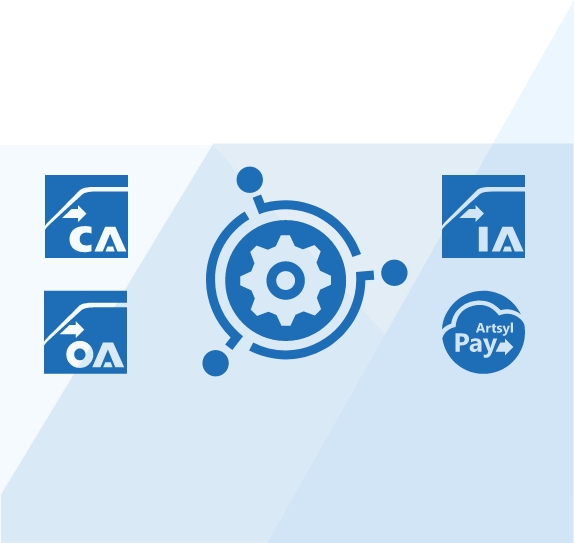As Canadian companies modernize their operations, they encounter various obstacles while trying to automate their Accounts Payable (AP) processes. These challenges stem from the complex nature of AP automation and the diverse requirements of Canadian businesses.
Understanding the Unique Landscape of Canadian AP Automation
It’s important to note that Canadian AP automation differs from its US counterpart due to unique regulatory requirements, cultural considerations, and business practices. While both countries share similar goals in streamlining financial processes, Canadian businesses must navigate additional complexities such as bilingual documentation, compliance with provincial regulations, and adherence to Canadian tax laws.
In this article, we will delve into the specific requirements and considerations for implementing AP automation in a Canadian context. By understanding these nuances, Canadian businesses can effectively address challenges and maximize the benefits of AP automation tailored to their needs.

Ready to revolutionize AP automation?
Explore docAlpha by Artsyl, the ultimate solution for Canadian businesses. Driven by AI and machine learning. Seamlessly integrate with your ERP and accounting systems for unparalleled efficiency.
Now, let’s review the challenges Canadian organizations face when implementing AP automation:
- Complex Regulatory Environment: Canada’s diverse regulatory landscape, including provincial regulations and tax laws, adds complexity to AP processes. Ensuring compliance with these regulations while automating AP workflows can be challenging.
- Integration with Legacy Systems: Many Canadian organizations still rely on legacy systems for accounting and ERP functions. Integrating AP automation solutions with these systems can be difficult and may require customization to ensure seamless data exchange.
- Bilingual Requirements: Canada’s bilingual nature presents challenges for organizations operating in both English and French-speaking regions. AP automation solutions must support bilingual document processing and communication to meet regulatory requirements and ensure inclusivity.
- Varied Payment Methods: Canadian businesses use a variety of payment methods, including checks, electronic funds transfers (EFTs), and digital wallets. AP automation solutions need to support multiple payment methods to accommodate diverse vendor preferences and regulatory requirements.
- Data Security and Privacy: Protecting sensitive financial data is a top priority for Canadian organizations. AP automation solutions must adhere to stringent data security and privacy regulations, such as the Personal Information Protection and Electronic Documents Act (PIPEDA), to prevent data breaches and ensure compliance.
- Vendor Onboarding Challenges: Onboarding vendors onto AP automation platforms can be time-consuming and challenging, particularly for organizations with a large supplier base. Ensuring vendor participation and compliance with new processes requires effective communication and support.
Addressing these challenges requires careful planning, collaboration with technology partners, and ongoing commitment to process improvement. By overcoming these obstacles, Canadian organizations can unlock the full potential of AP automation to streamline operations, reduce costs, and improve efficiency.
Additional Resources: Invoice Payment: How It Works
How AP Automation Software Can Empower Canadian Businesses
AP automation software plays a pivotal role in addressing the challenges faced by Canadian businesses when implementing Accounts Payable (AP) automation. This essential tool streamlines various AP tasks, including invoice processing, expense reports, financial statements, credit memos, and transaction accounting summaries. By leveraging cutting-edge technology such as Optical Character Recognition (OCR) and machine learning, AP automation software eliminates manual data entry, reduces errors, and accelerates invoice processing cycles.
Furthermore, as Canadian businesses navigate the complexities of AP automation, it’s crucial to understand the specific requirements and considerations for implementing these solutions effectively. This is where AP automation software comes into play. Offering customizable workflows, real-time reporting capabilities, and seamless integration with existing ERP systems, AP automation software empowers Canadian businesses to optimize their AP processes efficiently.
Take your AP automation to the next level with docAlpha by Artsyl. Harness the transformative power of AI and machine learning to streamline AP documents processing. Experience seamless integration with your ERP and accounting systems.
Book a demo now
In addition to addressing regulatory complexities such as bilingual requirements and compliance with diverse payment methods, AP automation software helps Canadian businesses streamline AP tasks, reduce errors, improve compliance, and ultimately drive cost savings. By embracing AP automation software, Canadian businesses can enhance productivity and competitiveness in today’s dynamic business landscape.
- Streamline AP Tasks: AP automation software simplifies tasks such as invoice processing, expense reports, financial statements, credit memos, and transaction accounting summaries.
- Reduce Errors: By leveraging advanced technologies like OCR and machine learning, AP automation software minimizes manual data entry errors, ensuring accuracy in financial transactions.
- Accelerate Processing Cycles: Automation speeds up invoice processing cycles, allowing for quicker turnaround times and improved cash flow management.
- Customizable Workflows: AP automation software offers customizable workflows tailored to the specific needs and preferences of Canadian businesses.
- Real-Time Reporting: Real-time reporting capabilities provide insights into AP performance, enabling better decision-making and process optimization.
- Seamless Integration: Integration with existing ERP systems ensures seamless data exchange and enhances overall efficiency in financial operations.
- Enhanced Compliance: AP automation software helps Canadian businesses address regulatory complexities, such as bilingual requirements and compliance with diverse payment methods.
- Cost Savings: By streamlining AP processes, reducing errors, and improving efficiency, AP automation software ultimately leads to cost savings for Canadian businesses.
Additional Resources: Accounts Payable Workflow
Addressing Canadian AP Automation Challenges with Artsyl Solutions
Taking into account the unique tasks faced by Canadian businesses in accounts payable automation and the specific conditions of the Canadian market, Artsyl’s intelligent processing automation products for AP automation play a decisive role in automating accounting tasks and document processing. Among these solutions, docAlpha and InvoiceAction stand out as powerful tools equipped with advanced technologies such as machine learning and AI. These solutions are tailored to process various types of accounts payable documents, including invoices, expense reports, financial statements, credit memos, and transaction accounting summaries. With their ability to address the specific challenges of the Canadian market, including regulatory complexities and bilingual requirements, Artsyl’s AP automation software offers Canadian businesses a seamless and efficient solution to streamline their AP processes.
Here are some key benefits of Artsyl’s AP Automation software for Canadian businesses:
- Effortless Integration: Easily integrates with existing ERP or accounting systems, ensuring smooth data exchange and enhancing overall efficiency.
- Tailored AP Workflows: Offers flexible workflows that can be tailored to the specific needs and preferences of Canadian businesses.
- Instant Reporting: Provides actionable insights into AP performance through real-time reporting capabilities, enabling better decision-making and process optimization.
- Improved Compliance: Helps Canadian businesses address regulatory complexities, such as bilingual requirements and compliance with diverse payment methods.
- Cost Savings: Ultimately leads to cost savings by streamlining AP processes, reducing errors, and improving efficiency.
- Local Support: As a Canadian-based company, Artsyl understands the unique needs of Canadian businesses and provides local support and expertise.
Looking to automate your invoice processing? Experience InvoiceAction by Artsyl, the solution for invoice automation. With seamless integration and tailored for Canadian businesses, optimize
your efficiency today.
Book a demo now
Navigating Canadian Regulatory Compliance in AP Automation
In Canada, regulatory compliance is integral to Accounts Payable (AP) processes, requiring businesses to adhere to specific regulations and standards. Notably, the tax landscape in Canada differs from that of the United States. One prominent regulation is the Goods and Services Tax (GST) and Harmonized Sales Tax (HST) rules, which mandate businesses to collect and remit taxes on taxable supplies. Unlike the United States, where sales tax regulations vary by state, the GST uniformly applies across Canada. Additionally, in participating provinces, the HST amalgamates federal and provincial sales taxes. Therefore, businesses must accurately compute and report these taxes to ensure adherence to federal tax laws and provincial regulations.
Apart from federal taxes, Canadian businesses must navigate provincial tax regulations, which vary across provinces and territories. Each province has its own tax rates, exemptions, and reporting requirements, adding complexity to AP processes. For instance, some provinces impose separate provincial sales taxes (PST), while others utilize the HST. Furthermore, certain goods and services may be exempt from provincial taxes, necessitating businesses to carefully assess their tax obligations based on location and transaction nature.
Ensuring compliance with Canadian tax regulations is crucial to avoid penalties, fines, and legal consequences. Failure to accurately report and remit taxes can lead to audits, assessments, and reputational damage. Therefore, businesses must implement robust AP automation solutions to streamline tax compliance processes, reduce manual errors, and enhance accuracy in tax calculations. Leveraging automation technologies like InvoiceAction, an invoice processing software with tax management capabilities, enables businesses to mitigate compliance risks and maintain regulatory adherence in their AP operations.
Tailoring AP Automation Solutions to Industry-Specific Needs in Canada
Industry-specific considerations significantly influence AP automation needs and challenges across various sectors in Canada:
- Manufacturing: High transaction volumes and complex supply chains necessitate AP automation solutions capable of efficiently handling large quantities of invoices.
- Retail: Prioritizes multi-channel invoice capture to streamline processes across physical and online stores.
- Healthcare: Requires AP automation solutions with robust security measures to ensure compliance with patient data protection regulations like HIPAA or PIPEDA.
- Finance: Emphasizes integration capabilities with financial management systems for seamless data exchange and reconciliation.
Understanding the unique requirements of each industry enables businesses to tailor their AP automation strategies effectively, optimizing efficiency in financial operations.
Ready to streamline your invoice processing?
Discover InvoiceAction by Artsyl, the ultimate solution for automating invoices. Powered by cutting-edge technology, seamlessly integrate with your existing systems for effortless efficiency.
Book a demo now
Which Factors Should Industries Consider When Selecting an AP Automation Vendor?
Regardless of the industry, businesses should consider several key factors when choosing an AP automation solution to ensure they select the most suitable option for their needs. Here’s what they should pay attention to:
- Future Trends: Look for solutions that incorporate emerging technologies like artificial intelligence (AI), robotic process automation (RPA), and machine learning. These technologies can enhance automation capabilities and provide valuable insights for process optimization.
- Product Features: Evaluate the features offered by each solution, such as invoice processing, approval workflows, reporting capabilities, and integration with existing systems. Ensure that the solution aligns with your specific AP automation requirements.
- Pricing: Consider the cost of the AP automation solution, including implementation, licensing fees, and ongoing support. Compare pricing plans from different vendors to find the most cost-effective option for your budget.
- Customer Support: For optimal customer support, seek vendors with a Canadian presence and a proven track record of serving businesses in the country. This approach not only allows for purchasing AP automation solutions in Canadian dollars but also ensures access to local support, expertise in Canadian regulations, and understanding of the Canadian market. Choosing such vendors will enhance the value of the AP automation solution your company acquires.
- Scalability: Choose a solution that can scale with your business as it grows. Ensure that the solution can handle increasing transaction volumes and accommodate additional users and features as needed.
By carefully considering these factors, businesses can choose an AP automation solution that meets their current needs and prepares them for future growth and success.
Additional Resources: Artificial Intelligence (AI) Algorithms that Drive Invoice Data Extraction
Closing Thoughts
In conclusion, navigating the landscape of AP automation in Canada requires a nuanced understanding of regulatory compliance, industry-specific needs, and vendor selection criteria. As discussed, embracing AP automation software can empower Canadian businesses by streamlining processes, enhancing efficiency, and ensuring compliance with Canadian regulations. With Artsyl solutions tailored to address Canadian challenges and industry-specific requirements, businesses can confidently navigate the complexities of AP automation. By carefully selecting vendors that offer future-ready solutions and prioritizing customer support, Canadian industries can optimize their AP automation strategies for sustained success in today’s dynamic business environment.
Key Terms Explained
What is AP Automation Solution?
AP (Accounts Payable) automation solution refers to software or technology designed to streamline and automate the process of managing and processing accounts payable tasks within an organization. This includes functions such as invoice processing, approval workflows, payment processing, and reporting. AP automation solutions typically utilize technologies such as artificial intelligence (AI), machine learning, optical character recognition (OCR), and robotic process automation (RPA) to digitize and automate manual tasks, reduce errors, improve efficiency, and provide better visibility and control over the accounts payable process. These solutions can integrate with existing ERP (Enterprise Resource Planning) and accounting systems to further enhance automation and streamline financial operations. Overall, AP automation solutions help businesses save time, reduce costs, and improve accuracy in managing their accounts payable processes.

Contact Us for an in-depth
product tour!
What is Artificial intelligence?
Artificial intelligence (AI) refers to the simulation of human intelligence in machines, allowing them to perform tasks that typically require human intelligence. AI technologies enable computers to learn from experience, adjust to new inputs, and perform tasks autonomously, without explicit programming. These systems often leverage techniques such as machine learning, where algorithms analyze large datasets to identify patterns and make predictions or decisions based on the data. Other AI approaches include natural language processing, which enables computers to understand and interpret human language, and computer vision, which allows machines to perceive and interpret visual information like humans. Overall, AI aims to create intelligent systems that can mimic, augment, or surpass human capabilities in various tasks.
 AP Reconciliation: How to Reconcile Accounts Payable
AP Reconciliation: How to Reconcile Accounts Payable Data Preparation in Accounts Payable
Data Preparation in Accounts Payable Accounts Payable Software with Project Management
Accounts Payable Software with Project Management Accounts Payable: 101 Guide
Accounts Payable: 101 Guide Advanced AI for Accounts Payable: 7 Things You Need to Know
Advanced AI for Accounts Payable: 7 Things You Need to Know Accounts Payable Workflow
Accounts Payable Workflow